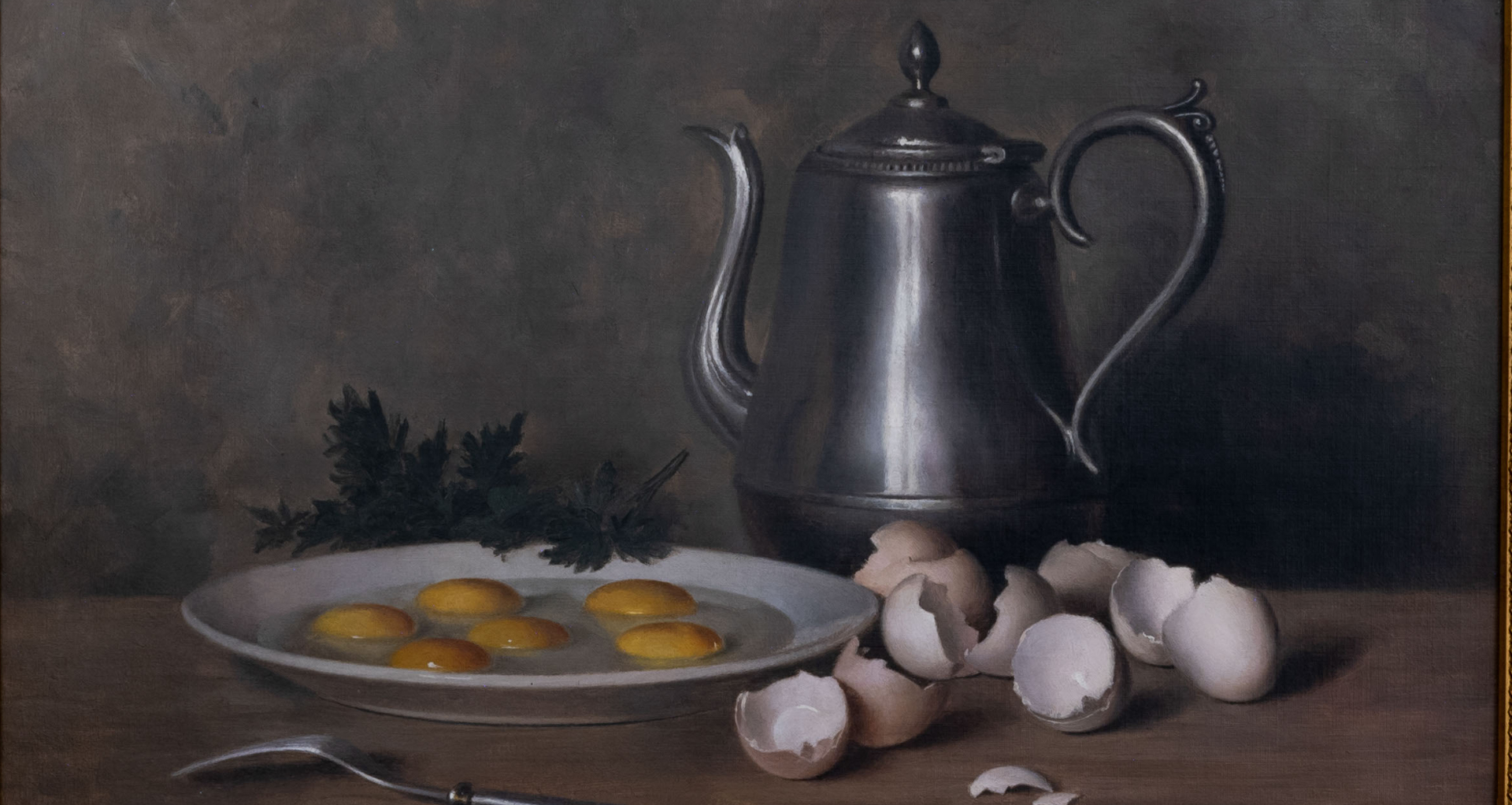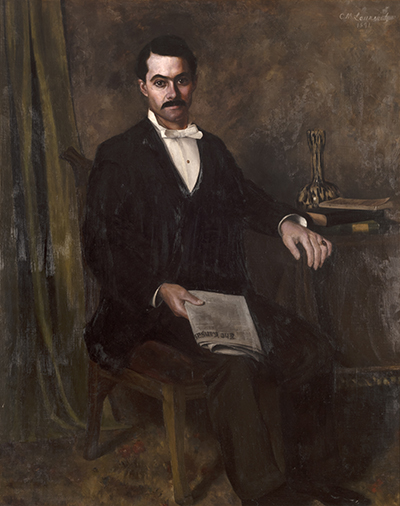

Clarisse Madeleine Laurent’s story is extraordinary in any context, but it resonates especially now. She was born to a family of French political exiles, forced to flee their home when their government was overthrown and a military dictatorship was installed.
During the Second Republic, 1848–52, Clarisse’s father Louis Jean Pierre Laurent (French, b. 1815) was a facteur, or postman, who actively distributed Republican literature.[i] The position provided him a degree of influence within the party and allowed him to establish relationships with ranking government officials. The Republican party was the primary political group that resisted Louis-Napoléon when in 1851 he organized a coup d’état, over-throwing the republic to prevent a presidential election, and ultimately proclaiming himself Emperor Napoleon III in November of 1852.[ii] Because of their resistance, thousands of members of the Republican party were arrested and deported to penal colonies. Louis Jean Pierre Laurent was among those arrested, and condemned to be deported to Cayenne, the capital of French Guiana in South Africa.[iii] Utilizing his local contacts, Laurent’s father, with two other prisoners, escaped the jail where he was held in the commune of Nangis, absconding to Brussels and then London. There, his family later met him.[iv] The Laurent family eventually emigrated to New York, in 1857, where both Clarisse and her brother Louis Charles were born.
The following year, the family decided to move West, arriving in Topeka, KS, in February of 1859.[v] They built a general store. Soon after moving to Topeka, the American Civil War broke out. The family witnessed the resultant destruction of the conflict on the Western front, losing a good friend in Quantrill’s raid on the town of Lawrence, Kansas, August 21, 1863.[vi] Against all odds and amidst a frontier settlement frequented by outlaws, with a war raging across the country, the Laurent family ultimately found prosperity in Topeka.
As a result, their children enjoyed excellent educations. Clarisse Laurent attended Bethany College, in Lindsborg, KS, and studied piano and violin at the Cincinnati Conservatory. In 1886 she went to Paris with her parents. She remained there until 1889. At the time, the state-sponsored Ecole des Beaux Arts, the primary French academic art school, did not admit women. So, Laurent enrolled at The Académie Julian, the alternative arts institution in Paris, founded by Rodolphe Julian. The school was the first professional art institution “that admitted women on an equal basis to men.”[vii] As such, women artists at The Académie Julian were permitted a full academic training, which included drawing from a male nude model and anatomy studies. At the Académie, Laurent studied with Gustave-Rodolphe Boulanger (French, 1824 – 1888) and Jules-Joseph Lefebvre (French, 1836 - 1911), two of the most celebrated French academicians of the second half of the nineteenth century. Her time at the French atelier would have included a program of rigorous exhibitions and competitions in which she was judged amongst her male cohorts, as a means of preparation for navigating a successful career outside of school.[viii]
Upon her return to the United States, first to Oakland, CA, where she briefly had a studio, and then back to Topeka sometime in the early 1890s, Laurent generated a series of portraits of her extended family that reside in Topeka Collections. Laurent’s self-portrait (c. 1889) remains in the Topeka Public Library’s permanent collection. Paintings of her elder sister Hermance Laurent Billard (c. 1890), and two of Hermance’s sons Robert Billard and L. Philip Billard (c. 1899), along with an untitled portrait of a woman (c.1888) are on view in the historic Ward-Meade House. Laurent’s portrait of her niece Anita Laurent (c. 1896) is part of the permanent art collection at Cedar Crest Mansion, the Kansas Governor’s residence. In the Mulvane Art Museum’s collection, a recently conserved untitled portrait of a man (c.1891), possibly depicts Laurent’s cousin Seldon Webster Bowman (above).
This portrait attests to the culmination of influences in Laurent’s artistic training. Areas of the painting, in particular the background, green drapery and glass vase, demonstrate an evident interest in avant-garde painting styles. However, the nearly life-size male figure, the stack of books on the table, and the Kansas City Star newspaper clutched in the sitter’s right hand clearly show Laurent’s academic ability to create highly finished painting surfaces that reveal a fidelity to optical fact. The juxtaposition of the loosely rendered background of modulating greys, brown, and greens, against the figure in his crisply defined white bow tie and other highly finished objects that achieve a trope l’oeil effect, functions as a sort of selective focus. The contrast accentuates attributes of the figure while at the same time articulates Laurent’s diverse artistic accomplishments.
Laurent’s ability at illusionism is exemplified in Eggs, 1892, (below) a still life painting in the Mulvane’s permanent collection. A tabletop featuring a pewter teapot, a shallow bowl filled with egg yolks, broken egg shells and a fork, appears in a shallow picture plane, against a grey background. Again, Laurent has used the directionality of her brushwork to create a sense of visual modulation in the grey background. In this case, with much less looseness and with a more limited range of colors. The visual effect suggests the naturally occurring and subtle shift of light and shadow in a dimly lit interior space. The reflective quality of the ceramic, metal, and food surfaces recall the tradition of Dutch seventeenth-century still life painting. Eggs was exhibited prominently in Laurent’s lifetime. It was among several of her paintings displayed in the American Pavilion at the 1904 Louisiana Purchase Exposition in St. Louis, Missouri.
Perhaps the most prestigious of Laurent’s known painting commissions was her Portrait of Governor Samuel Johnson Crawford, 1911, now in the collection of the Kansas State History Museum. Rendered in an accomplished realist manner, the painting depicts Governor Crawford (1835 – 1913), not as the 76-year-old man that he was when he commissioned the painting, but as he would have looked at the age of thirty when he served as the third Governor of Kansas (1865 – 1868).
When Laurent passed away in 1940, her niece Anita inherited the majority of her art collection. After Anita’s death, more than fifty paintings by Laurent were sold at auction. The Mulvane Art Museum possesses seven oil paintings by Clarisse Laurent. We are looking for more. In an effort to tell her story, we are working to index Laurent’s paintings in public and private collections, with the intent of ultimately exhibiting a robust survey of the artist’s work. If you are interested in this project, or have knowledge of the whereabouts of some of Laurent’s artwork, please contact rebecca.manning@washburn.edu.
Rebecca Manning, Curator, Digital Content
Mulvane Art Museum
[i] Louis Charles Laurent, "Reminiscences by the son of a French pioneer," Collections of the Kansas State Historical Society 13 (1915): 364.
[ii] Encyclopedia Britannica, s.v. “Napoleon III emperor of France,” by Heinrich Gustav Euler, accessed March 8, 2022, https://www.britannica.com/biography/Napoleon-III-emperor-of-France
[iii] Laurent, "Reminiscences," 364.
[iv] Ibid., 364 - 5.
[v] Ibid., 364. A letter by Clarisse’s niece, Anita, provides the date 1858 for the family’s arrival to Topeka.
[vi] Ibid., 366.
[vii] Catherine Fehrer, "Women at the Académie Julian in Paris," The Burlington Magazine. 136 (1994): 752.
[viii] Ibid., 754.

